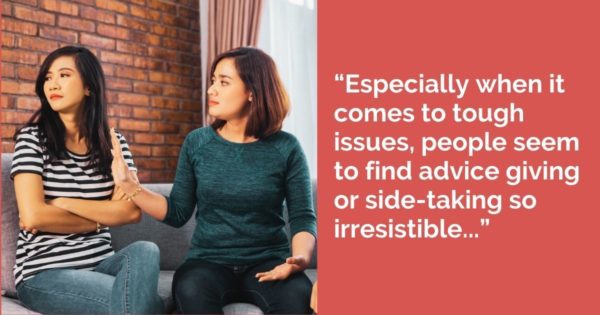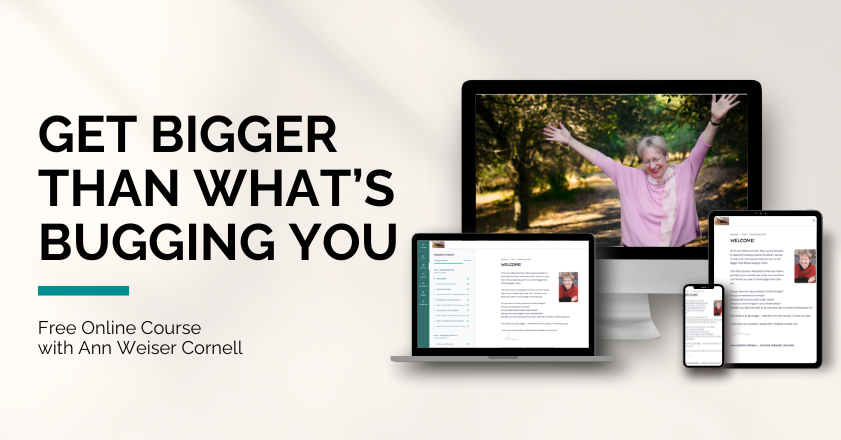For over 35 years I’ve helped people become free from stuck patterns and able to live the life they really want. Today I want to talk to you about something that’s a big issue when you’re trying to live a more empowered life…and that has to do with setting healthy boundaries.
Do you ever have a hard time saying no?
Do you sometimes feel overwhelmed by too many pulls on your time? Do you worry that other people will get upset if you take care of yourself? If you find yourself nodding “yes”, you’re struggling with boundaries.
I used to say yes when I wanted to say no. I didn’t even know I could say no! It would happen with family, with friends, and even with colleagues. Usually, I’d end up not doing the things I said Yes to… and then feel bad about it.
My own struggles with boundaries got me into a lot of messes until I figured out a few things, including:
- How to tell that my own needs were getting pushed aside (which didn’t come easily for me);
- What a healthy boundary even looked like (I sure didn’t learn that in the family I grew up in); and
- Noticing what I was saying Yes to when I wanted to say No… which really helped me communicate better with the other people in my life.
This is what I learned about those 3 things…
Number 1: How can you tell that your own needs are getting pushed aside?
Here are some telltale signs you might experience:
- Feeling drained
- Finding it EASIER to give to others than care for yourself
- Feeling angry at other people (especially in close relationships)
- Feeling resentment, like people are asking too much of you
- Blowing up and having to apologize later
The biggest sign that your feelings and needs are a low priority is a feeling of powerlessness – like you’re stuck in the situation and you can’t get out.
Let’s take my friend Jean for example. Every day, she’d visit her elderly mother in the care home. And although often she was grateful to connect with her mother this way, at other times she felt resentful, even trapped and powerless. Jean realized that the days she felt trapped were the days when she was pushing aside her own needs, telling herself she HAD to visit her mother. But was that true?
After Jean realized that her own needs mattered too, she arranged for a friend to visit her mother when she needed to do something else. And here’s the thing: now Jean feels healthier, calmer, and more able to be fully present with her mother when she CAN be there. Setting that simple boundary made Jean’s life and her relationship with her mother even better.
Number 2: What does a healthy boundary even look like?
Well, healthy boundaries are flexible. They honor a lot of different values you hold (like inclusivity, privacy, connection…).
Healthy boundaries take your needs into account. And other people’s needs too.
Healthy boundaries honor the kind of relationship you have with the other person (like close, or intimate, or professional). And what kind of relationship you want with that person going forward.
Let me share an example…
I used to think that I had to hang out with the people I lived with. As long as they were around, I felt I had to be with them, talking, eating together, watching TV… I vaguely felt like this was what people did, and I didn’t even know how to step away from that constant interaction to take time for myself. So, as a way to get space, I would sometimes pick a fight with them.
Of course, picking a fight to get space isn’t a very healthy way to set a boundary…so I started to get curious about what was going on inside. I discovered it was hard for me to take space because I felt like I was rejecting them or breaking rules about how people who live together interact. Eventually, I found that what I wanted was some “introvert time.”
So, the next time I caught myself wanting to pick a fight to get space, I did something else. I simply said, to my partner and my teenage daughter, “I need some introvert time.”
It was such a relief (for me and probably for them too). I wasn’t being difficult. I wasn’t complaining about what I didn’t want or making it about them being bad or wrong. I simply asked for what I wanted.
Most of the time, healthy boundaries are that simple – just asking for what you want (note: I didn’t say they were easy, but they usually are very simple).
And that takes us to…
Number 3: Discovering what you’re saying yes to when you need to say no.
Every time you want to say no to someone or something, there’s actually something else you are saying yes to. And when you get in touch with that, communicating about your boundaries becomes so much easier!
Let me take you through a process right now that can show you what I mean. This won’t take long. It’s very simple and it could change how you live your life!
A Helpful Exercise
Take a moment to get grounded… to feel your feet on the floor, and if you’re sitting, to feel your seat on the chair. Be aware of your breathing… just coming into here and now.
Got it? Now, remember a time when you wished you had said “No” to someone. Or maybe you did say no, but you wish you could have done it more elegantly and cleanly. Or maybe it wasn’t a person you said no to, but a situation. I’m remembering a time when I said “No” to a very good job I was in. I got a lot of blowback from people who thought I was crazy to do that. Pause now and get a sense of that, what you would have wanted to say no to.
Have you got it? OK, good. Now take some time to ask yourself: What was I saying yes to? Or what would I have been saying “Yes” to if I had been able to say “No”? For me, when I left that job, I was saying “Yes” to an inner sense that I needed to be somewhere I could help people more, and that job wasn’t it.
One more step: Pause and get a sense of how you might have told a relevant person about your boundary, emphasizing what you were saying “Yes” to. I would have told people, “I’m not just leaving here, I’m going toward something that is really important to me.”
Did you feel a shift from that exercise? I’ve got a lot more just like it!
In fact, if you’d like to learn more ways you can calmly and confidently set boundaries you can be proud of…keep going.








You’re welcome, Ann. So glad it helps!
Just what I needed at this time as I make the move to care for aging Sisters at our retirement home, Ann! Thank you!